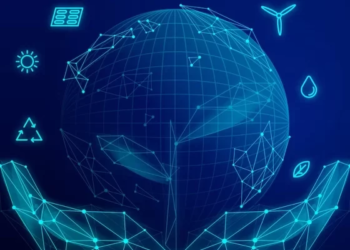In the evolving realm of business, the concepts of invention and innovation are frequently used interchangeably, leading to misconceptions and confusion. However, it is important to discern their fundamental differences and understand their distinct roles in driving progress. This article aims to shed light on the disparity between invention and innovation, unraveling their meanings and exploring their significance in the business world.
By gaining a comprehensive understanding of these two notions, entrepreneurs and companies can navigate the dynamic environment with greater clarity, fostering growth and success.
Understanding Invention and Innovation
Defining Invention
Innovation and invention are often used interchangeably, but they actually refer to distinct processes. Invention refers to the creation of new ideas, technologies, or products, while innovation entails the practical implementation and improvement of these inventions.
For example, the invention of the telephone revolutionized communication by enabling instant long-distance conversations. However, it was through subsequent innovations in technology and infrastructure that telephones became widely accessible and integrated into everyday life. This distinction between invention and innovation is important to understand how creativity is transformed into tangible solutions that impact society.
Characteristics of Invention
Examples of Invention
In the context of “invention vs innovation,” it is important to understand the practical examples of invention. One such example can be found in the field of transportation, where the invention of the automobile revolutionized the way people traveled. Similarly, the invention of the telephone transformed communication by making it possible to communicate remotely. In the world of technology, the invention of the computer paved the way for advancements in various industries. These examples illustrate how important inventions have played a role in shaping our modern world. By looking at practical instances of invention, we can better understand the impact it has had on society.
Defining Innovation
Innovation goes beyond simple invention. It involves transforming ideas or concepts into practical solutions that address real-world problems. Rather than focusing on creating something entirely new, innovation aims to improve existing products, processes, or strategies.
For example, a company may innovate by introducing a more efficient manufacturing process, resulting in higher productivity and cost savings. Similarly, a mobile app that simplifies a complex task for users is an innovative solution. By understanding the distinction between invention and innovation, businesses can strategically implement changes that drive progress and meet the ever-evolving needs of their customers.
Characteristics of Innovation
In the context of invention versus innovation, it is important to understand the characteristics of innovation. Innovation is not simply about creating something new, but rather about introducing a novel solution to a problem that offers value to people. One characteristic of innovation is its ability to disrupt existing industries and markets.
For example, the smartphone revolutionized communication by combining multiple devices, such as phones and cameras, into a single handheld device. Another characteristic is the continuous improvement and iteration of ideas. Take, for instance, the evolution of electric cars, which started with limited range and charging infrastructure but have now become more practical and widely adopted. Innovation is about pushing boundaries and driving change in a way that benefits society.
Examples of Innovation
In the realm of invention versus innovation, it is important to highlight some practical examples of innovation. One such example is the development of touchscreen technology, which revolutionized the way we interact with electronic devices. Another example is the introduction of ride-sharing services, which disrupted the traditional taxi industry. Furthermore, the creation of online streaming platforms transformed the entertainment industry by providing consumers with a convenient and on-demand way to access media content. These examples demonstrate how innovation has the power to transform and improve various aspects of our daily lives.
Distinguishing Invention from Innovation
Key Differences between Invention and Innovation
When comparing invention and innovation, it is important to understand their key differences. Invention refers to the creation of a new product, process, or idea, while innovation is the process of implementing that invention into the market and making it valuable.
For example, a company might invent a new technology for wireless charging, but the innovation lies in bringing that technology into the mainstream and making it accessible and user-friendly for consumers. Another example could be the invention of a new medication, where the innovation lies in the development of effective packaging and distribution channels to ensure its widespread availability.
Invention focuses on the initial creation, while innovation emphasizes the implementation and commercialization of that creation. Both are essential for progress and success in various industries.
Differentiating Factors
When comparing invention and innovation, it is important to consider their differentiating factors. One of the key distinctions lies in their outcomes. Invention refers to the creation of a novel product or concept, whereas innovation involves implementing that invention into the market in a practical and impactful way. For example, while the invention of the electric car was significant, it was the innovation of companies like Tesla and Nissan that brought these vehicles to the masses, revolutionizing the transportation industry.
Another differentiating factor is the level of consumer adoption. Inventions may take time to gain widespread acceptance, whereas innovations have the advantage of building upon existing consumer needs and preferences. Take smartphones as an example: while the invention of touch-screen technology was a breakthrough, it was Apple’s innovation of the iPhone that captured the market, introducing a revolutionary way of communication and entertainment.
Similarities and Overlaps
When considering the relationship between invention and innovation, it is important to understand the similarities and overlaps between these two concepts. Invention refers to the creation of a new product, process, or idea, while innovation involves the implementation and commercialization of these inventions. Both invention and innovation involve creativity and problem-solving skills, as individuals seek to develop unique and practical solutions.
For example, the invention of the smartphone transformed the way we communicate and access information, while the subsequent innovations in smartphone technology led to the development of various applications and features that enhance our daily lives. These practical examples highlight the interconnected nature of invention and innovation in driving progress and advancements in society.
Importance in the Business World
The Role of Invention in Businesses
Invention plays a fundamental role in businesses, driving them forward by introducing new ideas, products, or processes. It is through invention that companies are able to break free from the confines of the status quo and create something truly original. Consider the introduction of the smartphone, which revolutionized communication by combining various technologies into a single device.
This invention not only reshaped the mobile industry but also transformed the way we interact with technology daily. Similarly, the invention of online streaming platforms disrupted the entertainment industry by providing a convenient and accessible way to consume media. Inventions like these have the power to completely disrupt markets, offering businesses new avenues for success.
The Role of Innovation in Businesses
Innovation drives businesses forward by introducing new ideas, products, and processes. It is the fuel that propels companies to adapt and stay competitive in ever-changing markets. Without innovation, businesses risk falling behind and becoming irrelevant.
Real-World Examples
Invention and innovation can be illustrated through familiar scenarios. Take the smartphone, for instance. The invention of mobile technology brought about a significant change in how we communicate, access information, and conduct business. The subsequent innovation of touchscreen technology revolutionized user interfaces, making smartphones easier to use and more accessible. Another example is electric vehicles. The invention of electric cars challenged the traditional combustion engine, leading to innovative solutions like increased battery efficiency and faster charging times. These real-world examples demonstrate how inventions drive innovation, fueling progress and shaping the future.
Key takeaways
In the business world, it is crucial to understand the distinction between invention and innovation. While the two terms are often used interchangeably, they refer to distinct concepts. Invention involves the creation of a new product, process, or technology, which does not yet exist. On the other hand, innovation involves the successful implementation of new ideas or improvements to existing products, processes, or technologies.
It is important to recognize that not all inventions lead to innovations, as innovation encompasses factors such as market acceptance and commercial viability. Understanding the difference between invention and innovation can help businesses strategize effectively and make informed decisions about their products and services.





